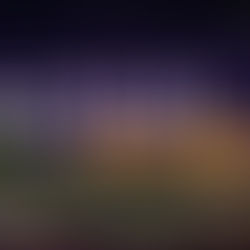Sea of Time | Golden Sun | Orchestral Cover
~ If you want to go to the stars, if you want to go to the stars ~
Join us spinning around in circles as we navigate the Sea of Time from Golden Sun, now for orchestra.
Feel free to check out the landing page with links to the recording, sheet music and more!
If you are one of my Patrons, you can now find the MIDI, XML and SIB files I created for this arrangement now available to download from Patreon!
Arranger's Note:
"The original track accompanies a short sailing dungeon of the same name. While there are no enemies or random encounters in this dungeon, an unsettling air of hostility and emptiness is present nonetheless.
We commence with various low instruments trodding slowly along the sea floor, chromatically ascending and descending seemingly at random. Honestly, I can't deduce a true tonal centre here, except for the progression to F♯ at 0:13, which signals the 2nd half of the 8-bar phrase.
While Sakuraba's original was scored for electric bass and timpani / bass drum, here I scored it additionally for low piano, contrabass and tam-tam to further convey the unsettling atmosphere. The uncommon use of timpani pedal glissandi also contributes to this.
In the 2nd section (0:23), the opening material is nearly repeated in full, barring a few rhythmic changes and additional support from low winds. In addition to this a violin countermelody is added, now expanded with additional colouring through clarinets, piano and col legno viola (a wooden percussive technique). This is enhanced by subtle fluttertonguing in the flutes at 0:33.
Harmonically, we are still ambiguous; the violins enter with a D-E♭ semitonal dissonance, yet the bass underneath initiates on E♭/D♯, moving swiftly to E which together become a rare tri-semitonal dissonance (D-D♯-E). Though since E♭/D♯ appears in both the bass and violins at the opening, this would suggest E♭/D♯ holds some tonal significance (as does G♭/F♯ in the 2nd half of the phrase; 0:33).
In the final section (0:44), we get our greatest dissonance yet: the bass commences a chromatic stepwise ascent from D, while the violins develop into a swift chromatic phrase emphasizing the tritone interval - the most dissonance interval in Western harmony (here, E-B♭).
To complement this, I added tritone semitonal trillings subtly in the flutes and violas, alongside natural harmonic glissandi in the cellos to be played ad lib. (freely). Together, this creates a rather chaotic and unsettling passage of music, but still not too busy to continue the air of emptiness.
By the 2nd half of the phrase, a 2nd violin is added, repeating the previous violin's material a minor 3rd above, creating an indirect diminished 7th due to the stacking of tritones a minor 3rd apart (E-B♭ and G-C♯). The diminished 7th, of course, is an unstable chord comprised of two tritones.
Afterwards, instruments abruptly drop off as we return to the foreboding opening.
To finish, I wrote a brief concluding statement built out of the opening material, and signalling a final conclusion for the piece."

































Comentarios